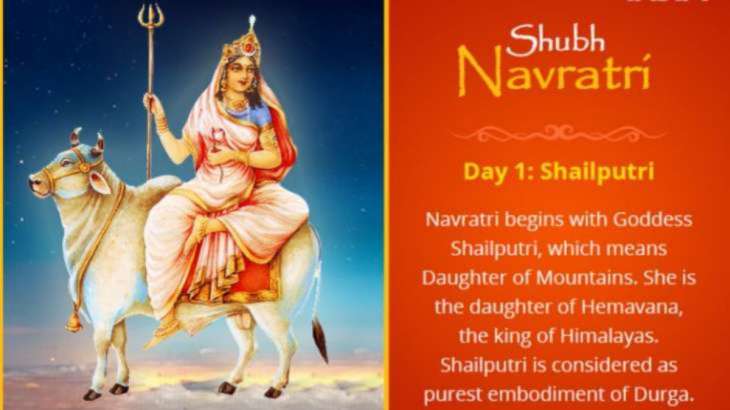Navaratri Rituals and Worship | Maa Shailputri
On day 1 of Navaratri Goddess Durga is worshipped as Maa Shailputri. Maa Shailputri is one of the Navadurgas and is believed to be the reincarnation of Goddess Sati.

Maa Shailputri
Shailputri literally means the daughter of the mountains. Goddess Sati, the consort of Shiva, had immolated herself unable to bear the insults meted out to her husband by her father. Shiva was deeply saddened and angered by the death of Sati and performed his destructive dance Tandav. Nearly everyone present at the Yagna including Daksha, the father of Sati, was slain by Virbadra and Bhadrakali, whom Shiva had created to avenge the death of his wife. Later he restored them all to life. After Sati’s self-immolation, Shiva lost all the interest in worldly affairs and became an ascetic all over again. His turning the ascetic, however, spelt doom for the universe. To bring him back into worldly affairs again, the gods prayed to Maa Sati and she agreed to reincarnate as the daughter of Himavan. Parvati was thus born. Even as a child she was an ardent devotee of Lord Shiva and in due course, she became his consort. Shailputri is another name of Maa Parvati.
Bull is the vehicle of Maa Shailputri. In her right hand, she carries a Trishul (trident) and in her left hand, she has a lotus flower. Her fair complexion symbolizes innocence, purity, peace and calmness.
Maa Shailputri is the deity of fortune and prosperity. Her worship leads to spiritual awakening in her devotees. As she governs the Moon, those afflicted by the bad phases of Moon get relief by worshipping her.
In many parts of India, Navaratri celebrations begin with the installation of a sacred pot (Kalash Sthapana) at a sanctified place in the north-east part of the house.
See also
Navaratri celebrations in Kerala
Navaratri celebrations in Maharashtra
Best places to celebrate Navaratri in India